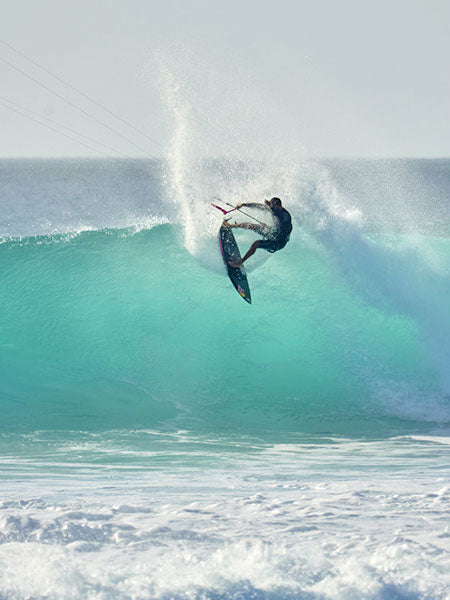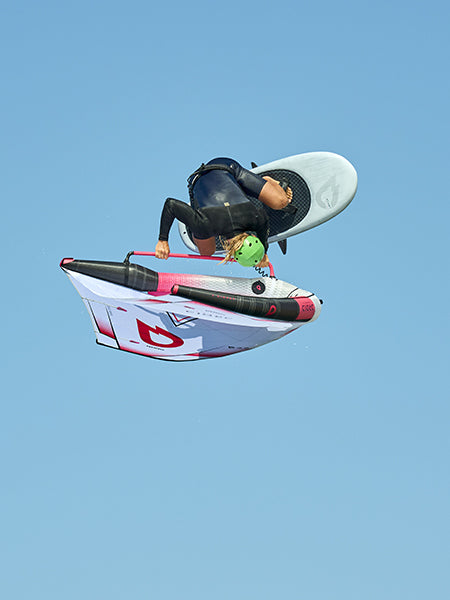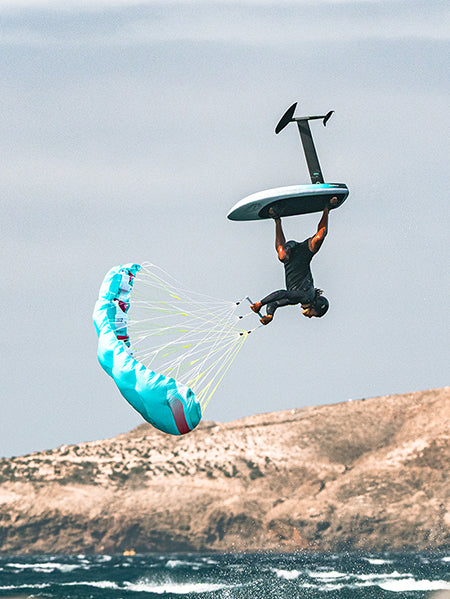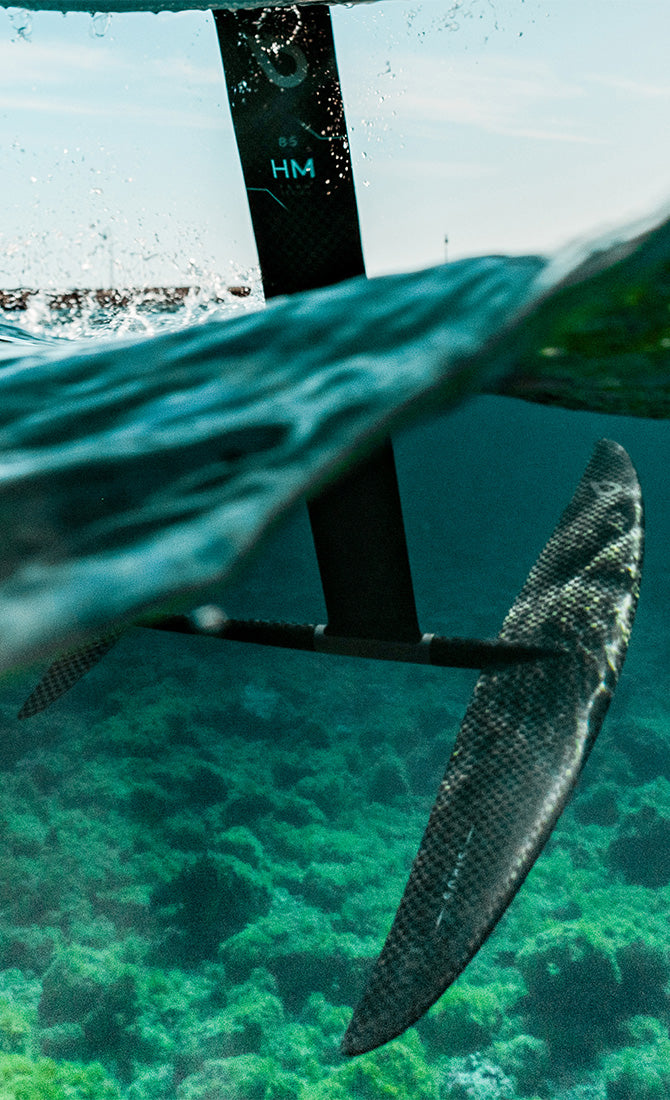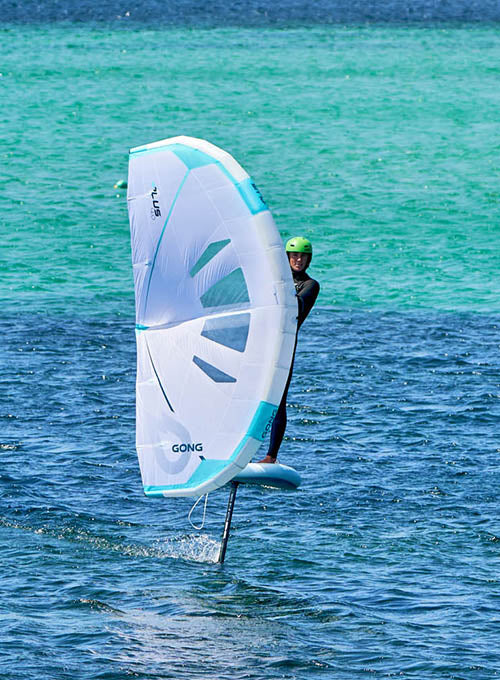GEAR: COMPLETE GUIDE TO OSMOSIS ON COMPOSITE BOARDS: CAUSES, PREVENTION AND REPAIR
Understanding osmosis on a wing or surfboard
Osmosis is a chemical phenomenon that can affect composite boards, particularly those made of polyester or epoxy resin and coated with paint or gelcoat. Under the effect of humidity, temperature and prolonged exposure to water, water molecules can gradually penetrate the various strata of the board's structure through tiny cracks, microporosities, or areas that are not perfectly watertight.
This process then forms bubbles under the paint or gelcoat, often visible as blisters of varying size. The paints used on wing, kite, SUP and windsurf boards are not designed for constant immersion, unlike the paints used on boats, for example.
These bubbles are caused by a chemical reaction between water molecules and the components of the resin or paint, creating pockets of acetic acid. The pressure of the water inside these bubbles then causes small, visible detachments on the surface of the board.
On boards and foils, osmosis is very rare and almost never affects the lamination itself. It simply damages the aesthetic finish.

Causes of Osmosis
- Moisture and prolonged storage: If a board is left damp in a confined environment (e.g. a sealed bag or cover), it is likely to develop osmosis. A damp pad after a session, for example, in a closed bag with no air circulation, can be enough to cause this phenomenon.
- Microcracks in gelcoat or paint: Small impacts or regular rubbing can create microcracks in the outer surface, which become micro entry points for water. Overexposure to the sun can aggravate the situation.
- Quality of materials and lamination process: Low-quality materials or non-optimized manufacturing (e.g. in very humid environments) can increase the risk of osmosis, as some resins are more sensitive to moisture than others. All constructions can suffer from osmosis, but some more easily than others.
Prevention methods
- Avoid prolonged storage in damp conditions. This is the key: after each session, let your board air-dry completely before storing it in a cover. If possible, store in a dry, well-ventilated area. Leaving your cover ajar will allow air to circulate and lower the humidity level inside.
- Storage temperatures also play a role. In a room with a moderate temperature, this osmosis phenomenon can occur, but only over a long period of time, and of course if the board is stored in a cover with humidity. But this phenomenon can also occur over a shorter period of time, if the temperature is much higher. In a car in the sun, for example, where the temperature rises rapidly, this phenomenon can occur in a matter of hours.
- Regularly check the condition of the paint or gelcoat: look for micro-cracks or areas where the coating looks worn. These areas should be treated immediately to prevent water penetration. Anything that catches on the nail should be repaired.
- Applying a protective treatment: Epoxy coatings and varnishes are available to enhance the surface's resistance to moisture. Apply them as a preventive measure, especially if you use your board frequently in salt water. All GONG boards have this type of finish as standard.
What to do in case of osmosis?
If you notice blisters under the paint or gelcoat, it's essential to act quickly to limit the extent of the damage. Here are the recommended repair steps:
- Drying the board: Remove the board from the water and place it in a dry, ventilated environment for several days, or even weeks, to allow it to dry thoroughly.
- Sanding the affected area: Once the board is completely dry, gently sand blistered areas to remove damaged paint or gelcoat. Use fine sandpaper to avoid damaging the lower layers.
- Blister treatment: For deeply affected areas, it may be necessary to inject a repair resin to fill the voids and restore watertightness. Extremely rare on boards.
- Applying a new coating: After sanding and treatment, apply a new gelcoat or coat of paint suited to the board's materials, identical to the original finish. Make sure the coating is properly applied for optimum protection.
Common mistakes to avoid
- Don't leave a damp board in a closed bag: stagnant humidity is one of the main causes of osmosis. Always let the board air-dry.
- Don't overlook small impacts: Even small scratches or micro-cracks should be repaired as soon as possible to prevent water penetration.
- Don't use unsuitable products: Using unsuitable resins or paints can make the situation worse. Always opt for repair products specific to the composite materials used for your boards.
Conclusion
Osmosis is a rare problem on boards, and totally avoidable with good practice. By drying your board thoroughly, repairing minor damage quickly and storing the material correctly, you will considerably reduce the risk of these little blisters appearing under the paint. When in doubt, don't hesitate to call in a professional for a quality repair.


